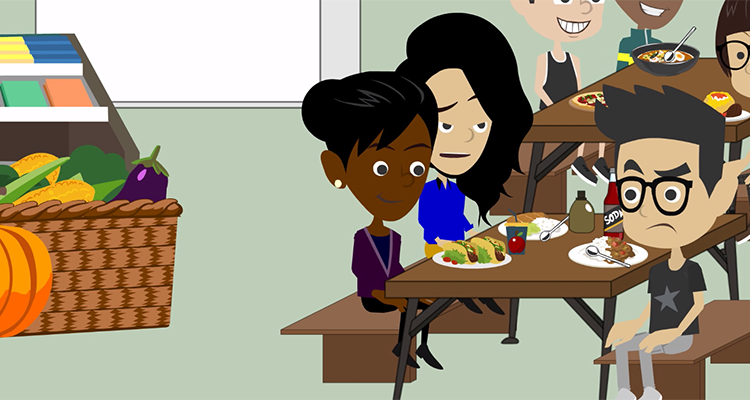Can short animations be used for effective science communication, asks guest-blogger Queen Alike, Public Health Specialist at the National Institutes of Health National Library of Medicine (NLM).
In the era of the Internet, short videos and striking images can capture the world. From the ALS Ice Bucket Challenge videos to heated debates on whether a dress was black and blue or white and gold, trends can form, spread, and go viral, reaching millions of people in a short period of time.
Today’s increasingly technological world requires innovative communication methods to capture attention and deliver an effective message. For example, First Lady Michelle Obama released a video through Vine, a video sharing platform where users record and edit up to six-second-long video clips. Featuring the popular DJ Snake and Lil Jon song “Turn Down for What” and cleverly playing off the term “turn up,” which means to let loose and have fun, the Vine promoted eating turnips. No nutritional benefits were exhorted, but the video memorably introduced and endorsed eating the vegetable – all in 6 short seconds.
Similarly, simple, short animations, developed with free or low-cost Web tools, have emerged as a cutting-edge medium to inform the general public about science, health, and their practical relevance in people’s lives. The National Library of Medicine (NLM) has developed animations based on a diverse set of science topics to teach young people about subjects such as biology, chemistry, and ecology, while simultaneously displaying the impact of environmental toxins on the environment and human health. Animations’ ability to visually explain complex subjects and deliver memorable messages makes the medium a great tool to reach broad audiences, including those with limited literacy and short attention spans.
Unconventional ≠ Ineffective
Nontraditional educational methods are sometimes dismissed as informal or inefficient, but play an important role in teaching complicated subjects. One of animations’ greatest strengths is that they present complex ideas in a simplified style. Sometimes, professionals do not realize they are using field-specific vocabulary, as the terminology is commonly used in their line of work. Animations provide simple, vivid images and push away from the language frame of mind. It’s easy to use field-specific jargon, but meaningful impact happens when people understand what they learn and better yet, remember and apply it.
Animations can use pop culture to teach complex topics. For example, NLM’s “Silent, but Leadly: Toxicity of Lead” animation features Leadman, an intergalactic superhero modeled after the popular Ironman character from the Marvel Comics series. Leadman insists on working on earth wearing his lead suit, which is toxic to humans. He meets Professor Plumbum, who convinces him to redesign his suit into something less leadly. Recognizing the iconic character, viewers may be more inclined to want to learn about lead.
Science Relevancy to Daily Life
Animations’ engaging plots can reveal science’s presence and practicality in one’s everyday life, including its connection with health. One of NLM’s newest animations focuses on arsenic in food, and centers around three students learning about arsenic in rice and apple juice.
The animation models for viewers complex concepts like organic and inorganic compound formation, making the invisible visible. Hearing how compounds form while simultaneously watching molecules combine reinforces learning by delivering information through multiple perceptual channels. Moreover, the audience is more likely to retain the information that connects arsenic to rice and apple juice, two commonly consumed products.
Short and Sweet
People live in an instant gratification culture. From instant coffee to high-speed internet, there’s an expectation for things to come rapidly. How one processes information has also changed. Animations can accommodate short attention spans by explaining complex topics quickly, yet accurately. There may be less temptation to be distracted when watching an entertaining video that uses humor and includes cultural references.
Endless Possibilities
From Wikipedia to Yahoo Answers, an increasing number of channels are available for people to learn about a myriad subjects. Different methods can be used to reach millions of people to inform and enact change. Informing people through traditional mediums such as books and lecture-style teaching are useful and cannot be overlooked. However, other mechanisms should be explored. Animations creatively reach a broad audience and have the potential to deliver memorable messages in a brief, engaging manner.
For more information on the National Library of Medicine’s Environmental Health Student Portal and animations, please visit kidsenvirohealth.nlm.nih.gov.



